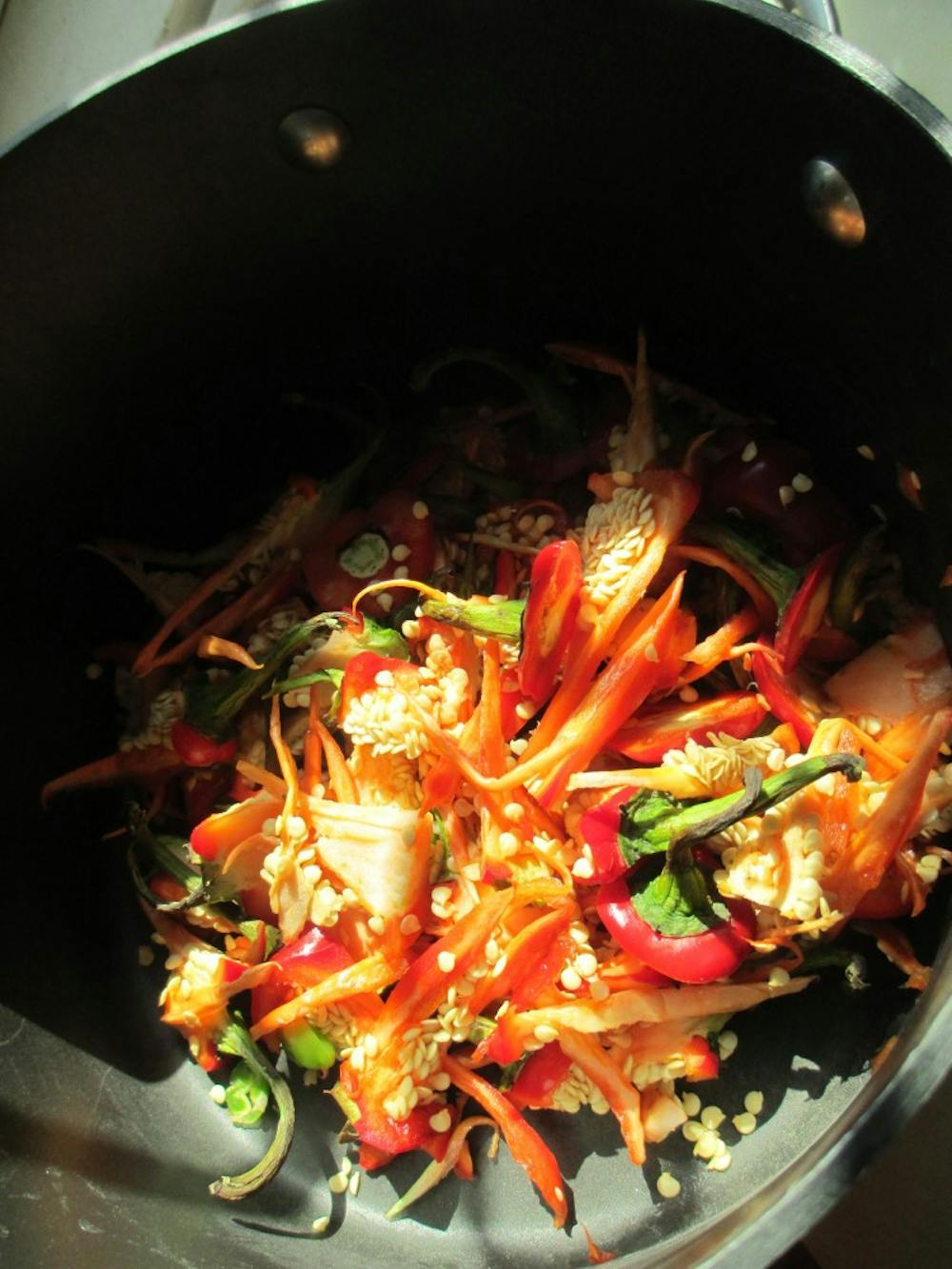culture@dailylobo.com
@UncaMo
Sriracha hot sauce is ubiquitous in Asian restaurants and is extremely popular with food bloggers and gourmets across the U.S. After the 30-day delay in shipping of any Sriracha product — shipments are expected to resume this month — there is renewed interest in homemade pepper sauce.
Here at the Daily Lobo Culinary Research Laboratory (read: my kitchen), we tried a few recipes found online, but none really had the same complexity of taste as the original sauce. A few require straining, and others do not. One that used fish sauce, or Nuoc mam, which is made from fermented anchovies, was a touch unpleasant and did not taste much like Sriracha at all. A lacto-fermented recipe did not come out well either, and carried a risk of dangerous spoilage. The uncooked version was neither spicy nor flavorful enough to warrant the name Sriracha.
The best we found was the recipe from Rany Clemen’s “The Sriracha Cookbook.” His recipe came very close to the taste and appearance of Huy Fong’s sauce, but we made some tweaks to make it even better.
New Mexicans know to wear gloves while handling hot peppers, but also remember to have good ventilation in the kitchen when heating the peppers and vinegar. Some of Huy Fong’s problems at present stem from complaints from neighbors about the fumes from the cooking and grinding of peppers.
Homemade Sriracha Sauce
(makes about 1 ½ cups)
1 pound Fresno peppers or red jalapeños
6 cloves fresh garlic
3/8 cup rice vinegar
1 2/3 tablespoons kosher salt
4 tablespoons honey
Equipment needed:
Blender or food processor
Melon baller or
small spoon
Latex or vinyl gloves
Sharp knife and
cutting board
Seed and stem the peppers, being careful to avoid getting the juices on skin. Slice the peppers in half lengthwise and cut off the stems. An easy way to seed the peppers and remove the membranes inside is to use a small melon baller or the tip of a small spoon. Save the seeds and any tops that are trimmed off.
Put the seeds and tops in a non-reactive pan and add just enough water to cover. Bring to a simmer and then strain and cool. This liquid will be used to adjust the consistency and spiciness of the sauce.
Place the peppers, garlic, vinegar, salt and honey in a food processor or blender and pulse until it forms a smooth sauce. Put the sauce in a non-reactive saucepan and simmer for about 10 minutes, being sure to provide good ventilation. Depending on the spiciness of the peppers, the steam can be very irritating to the eyes and lungs.
Allow the sauce to cool and then put it back in the food processor or blender and puree until the sauce is very smooth. There should be no need to strain the sauce if pureed long enough. Taste and adjust the consistency and flavor with the liquid made from the seeds. If needed, adjust the flavor with salt, honey or vinegar.
Get content from The Daily Lobo delivered to your inbox
Transfer into a shallow dish and cool. The sauce can be stored in a sealed container in the refrigerator for up to three months. Shake or stir well before serving.
Another way to enjoy the flavor of Sriracha is to make Sriracha salt. This seasoning is terrific on most foods. I’ve used it on hand-made chocolates, and put it on every slice of pizza and use it in dry rubs for smoked meats.
There are only two ingredients in Sriracha salt, but the process of making it usable can be time consuming.
Sriracha Salt
1 part Sriracha sauce
5 parts kosher salt
Equipment needed:
Electric dehydrator (Ideally, one with a fan)
Parchment paper and kitchen shears
Stainless steel bowls
Rubber spatula
If no dehydrator is available, aluminum foil and cookie sheets for oven drying
Food mill with medium-fine screen, mortar and pestle, or a plastic or stainless steel colander, as well as plastic zipper bags, gallon size
Prepare the dehydrator by cutting circles of parchment paper to fit in each rack. If oven drying, use foil to line as many cookie sheets as necessary for the amount you wish to make and preheat oven to 350°F. Mix the Sriracha sauce and salt in a stainless steel bowl. The texture should be like that of wet sand.
Immediately spread the salt mixture on the parchment paper or foil. The salt should be spread very thin to ensure even drying.
Dry the salt at medium heat (135°F to 145°F) for three to four hours in the dehydrator, or place in the oven, turn off the heat and leave overnight.
The salt will likely be in large, flat chunks. Break the pieces up with a spoon in a bowl until small enough to fit in the food mill, or use a mortar and pestle to grind the salt to the desired consistency. Alternatively, place the salt in a plastic zipper bag and crush with the bottom of a skillet. Sift the salt through the colander to the right grain size.
If stored in a sealed container in a dry place, the salt will last indefinitely.






